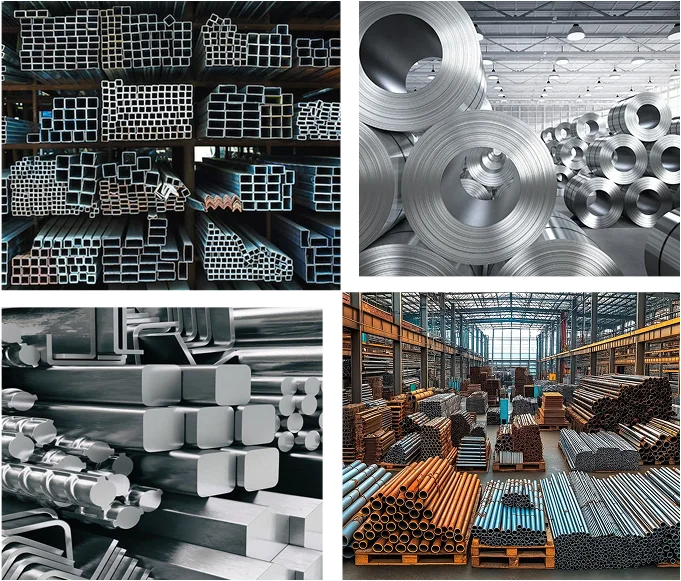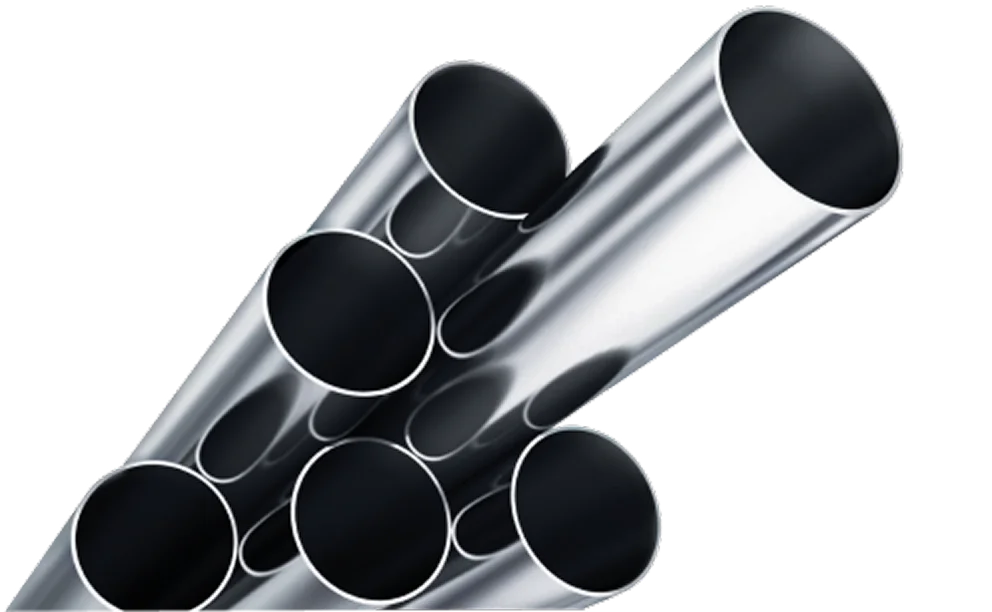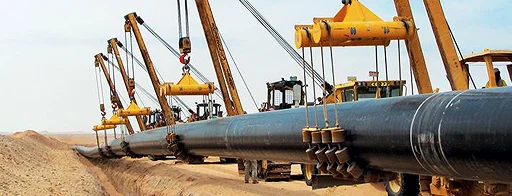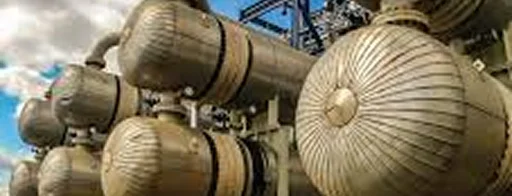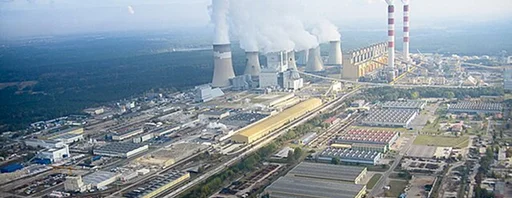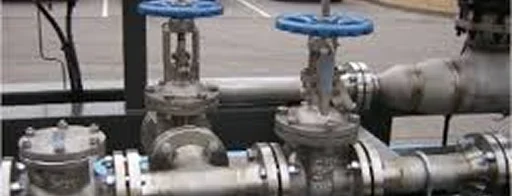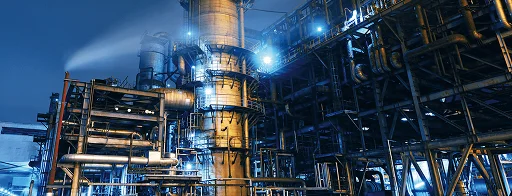
What Is Stainless Steel
What Is Stainless Steel? It's an iron-based alloy known for its exceptional resistance to corrosion, achieved primarily through the addition of at least 10.5% chromium. This chromium forms a self-repairing oxide layer on the surface that prevents rust and degradation in harsh environments. Additional elements like nickel, molybdenum and carbon improve its strength, heat resistance and fabrication characteristics, making it a versatile material across industries.
Used widely in marine engineering, chemical plants and oil refineries, stainless steel properties include a reliable balance of corrosion resistance, mechanical strength and ease of forming and welding. This makes it ideal for applications requiring long-term durability and performance in aggressive conditions.
How Is Stainless Steel Made?
Raw Material Preparation
The process starts by selecting raw materials such as iron ore, chromium, nickel, and alloying elements based on the desired stainless steel grade. These components are carefully measured to achieve the exact chemical composition for strength, corrosion resistance, and other SS mechanical properties.
Melting and Casting
The selected materials are melted together in an electric arc furnace (EAF), reaching temperatures above 1,600°C. The molten alloy is then poured into molds to form semi-finished shapes like slabs, billets, or blooms, which serve as feedstock for further processing.
Hot and Cold Working
Once cooled, the cast products undergo hot rolling to convert them into sheets, tubes, bars, or plates, depending on the final product type. Cold working may follow to further refine surface finish, improve dimensional accuracy, and enhance mechanical strength through work hardening.
Annealing and Pickling
The steel is annealed at high temperatures to relieve internal stresses and improve ductility. After annealing, it undergoes pickling in acid baths to remove surface oxides and scale, restoring the bright, corrosion-resistant finish.
Finishing
Depending on its intended use, stainless steel may be polished, brushed, sandblasted, or coated to meet aesthetic and functional specifications. Finishing also plays a role in surface hygiene, stainless steel properties like corrosion resistance, and weldability.
Stainless Steel Composition Chart
Stainless steel composition primarily includes iron, chromium (at least 10.5%), and varying amounts of nickel, carbon, manganese, and molybdenum. Chromium provides corrosion resistance, while other elements enhance strength, formability, and specific properties for different industrial applications.
|
Grade |
Chromium (Cr) |
Nickel (Ni) |
Molybdenum (Mo) |
Carbon (C) |
Typical Applications |
|---|---|---|---|---|---|
|
304 |
18–20% |
8–10.5% |
0% |
0.08% max |
Food equipment, kitchen sinks, general fabrication |
|
316 |
16–18% |
10–14% |
2–3% |
0.08% max |
Marine parts, pharma equipment, desalination |
|
430 |
16–18% |
0% |
0% |
0.12% max |
Automotive trim, kitchen appliances |
|
410 |
11.5–13.5% |
0% |
0% |
0.15% max |
Surgical tools, turbine blades, industrial parts |
|
Duplex 2205 |
21–23% |
4.5–6.5% |
2.5–3.5% |
0.03% max |
Oil & gas, pulp & paper, offshore structures |
Types of Stainless Steel
Austenitic Stainless Steel (e.g., 304, 316)
This is the most common type, non-magnetic and highly resistant to corrosion, especially in acidic or chlorinated environments. Its high nickel content provides excellent formability, weldability, and toughness even at cryogenic temperatures.
Ferritic Stainless Steel (e.g., 430)
Ferritic grades contain no nickel, making them cost-effective and magnetic. Though less corrosion-resistant than austenitic types, they are suitable for mild indoor environments and are often used in automotive exhausts and kitchen equipment.
Martensitic Stainless Steel (e.g., 410)
Martensitic stainless steels are hardenable through heat treatment, offering high strength and moderate corrosion resistance. They’re ideal for applications like surgical instruments and blades, where mechanical durability is essential.
Duplex Stainless Steel
This type of stainless steel combines austenitic and ferritic structures, resulting in high strength and improved stress corrosion resistance. It is widely used in oil & gas, chemical processing, and marine environments.
Precipitation-Hardened (PH) Stainless Steel
PH stainless steels gain superior mechanical properties through heat treatment processes that cause particles to precipitate and harden the metal. These are used in aerospace, nuclear reactors, and high-performance mechanical parts.
Stainless Steel Mechanical Properties
|
Property |
304 SS |
316 SS |
430 SS |
410 SS |
|---|---|---|---|---|
|
Tensile Strength (MPa) |
515–620 |
515–620 |
450 |
500–700 |
|
Yield Strength (MPa) |
205 |
205 |
275 |
275 |
|
Elongation (%) |
40 |
40 |
22 |
20 |
|
Hardness (HRB) |
70–90 |
70–90 |
88 |
96 |
These mechanical properties determine how well stainless steel can handle stress, deformation, and wear. Higher tensile and yield strength are ideal for structural use, while good elongation supports formability and toughness.
Physical Properties of Stainless Steel
- Density: 7.8–8.0 g/cm³ depending on grade
- Thermal Expansion: ~16.2 µm/m°C (304)
- Thermal Conductivity: ~16 W/m·K (304)
- Electrical Resistivity: ~0.73 Ω·mm²/m
- Magnetism: Austenitic – non-magnetic; Ferritic & Martensitic – magnetic
These physical attributes help determine suitability for thermal systems, electrical equipment, and magnetic-sensitive environments.
Corrosion Resistance of Stainless Steel
The chromium oxide layer acts as a self-healing barrier, blocking moisture and oxygen from reaching the underlying steel. Grades like 316 offer superior resistance to pitting and crevice corrosion due to added molybdenum, making them ideal for saline and acidic environments. Duplex stainless steels go a step further with strong resistance to stress corrosion cracking, especially in brine or chloride-rich conditions.
Applications of Stainless Steel Across Industries
- Desalination: Used in reverse osmosis skids, piping and pressure vessels due to saltwater corrosion resistance.
- Marine: Ideal for hulls, propeller shafts, and exhaust manifolds due to resistance to seawater and biofouling.
- Oil & Gas: Employed in downhole tools, separators, and pipelines for high strength and corrosion resistance.
- Petrochemical: Used in reactors, heat exchangers, and chemical tanks for durability under aggressive chemicals.
- Power Generation: Found in boiler tubes, turbine blades, and superheater coils handling high pressure and heat.
- Construction: Structural reinforcements, cladding, and handrails benefit from durability and aesthetic finish.
- Food & Beverage: Chosen for hygienic piping, tanks, and food-grade equipment for its cleanliness and corrosion resistance.
Advantages and Limitations of Stainless Steel
Exceptional Corrosion Resistance
Stainless steel’s chromium content forms a thin, self-healing oxide layer that protects the metal from rust, stains and chemical attack. This makes it suitable for harsh environments including marine, chemical, and industrial applications where other metals would quickly degrade.
High Tensile and Yield Strength
Many types of stainless steel offer impressive mechanical strength, allowing them to withstand high loads, pressures, and mechanical stresses. This makes them ideal for structural components, pressure vessels and heavy-duty machinery across industries like oil & gas and power generation.
Excellent Temperature Resistance
Stainless steel performs well across a wide temperature range from cryogenic conditions to high heat applications above 1000°C. Grades like 310 or 446 are used in furnaces, heat exchangers, and exhaust systems due to their ability to resist scaling and structural failure at elevated temperatures.
Excellent Recyclability
Stainless steel is 100% recyclable without any loss in quality or performance. Most stainless products contain a high percentage of recycled content, supporting sustainability goals and reducing environmental impact in construction, manufacturing, and energy sectors.
Comparison Chart: Stainless Steel vs Carbon Steel vs Aluminum
|
Property |
Stainless Steel |
Carbon Steel |
Aluminum |
|---|---|---|---|
|
Corrosion Resistance |
Excellent |
Poor |
Moderate |
|
Strength |
High |
Very High |
Moderate |
|
Weight |
Heavy |
Heavy |
Lightweight |
|
Machinability |
Moderate |
Good |
Excellent |
|
Cost |
High |
Low |
Moderate |
Each material has trade-offs stainless steel is the best for corrosion resistance, while carbon steel wins on cost and strength, and aluminum is favored where weight matters.
Choosing the Right Stainless Steel Grade
Choosing the correct stainless steel grade depends on the application's mechanical, environmental, and fabrication needs. For corrosive environments like seawater or acidic processing, grades like 316 or Duplex 2205 are preferred. If cost is a concern and corrosion isn't critical, ferritic grades like 430 may suffice. Consultation with material experts ensures compatibility with performance and SS mechanical properties requirements.
Related Products Of Stainless Steel We offer
FAQs – What Is Stainless Steel and Its Key Properties?
What is stainless steel made of?
It’s primarily iron mixed with a minimum of 10.5% chromium, and often nickel, molybdenum, and carbon to enhance corrosion resistance and strength.
What are the types of stainless steel?
The five major types of stainless steel are austenitic, ferritic, martensitic, duplex and precipitation-hardened stainless steels.
What are stainless steel properties?
Key stainless steel properties include corrosion resistance, high tensile strength, durability, heat tolerance and recyclability.
What are stainless steel mechanical properties?
These include tensile strength, yield strength, elongation, hardness and fatigue resistance, which vary by grade.
Where is stainless steel used?
Industries like marine, oil & gas, power generation, desalination, construction and food processing rely heavily on stainless steel components.
